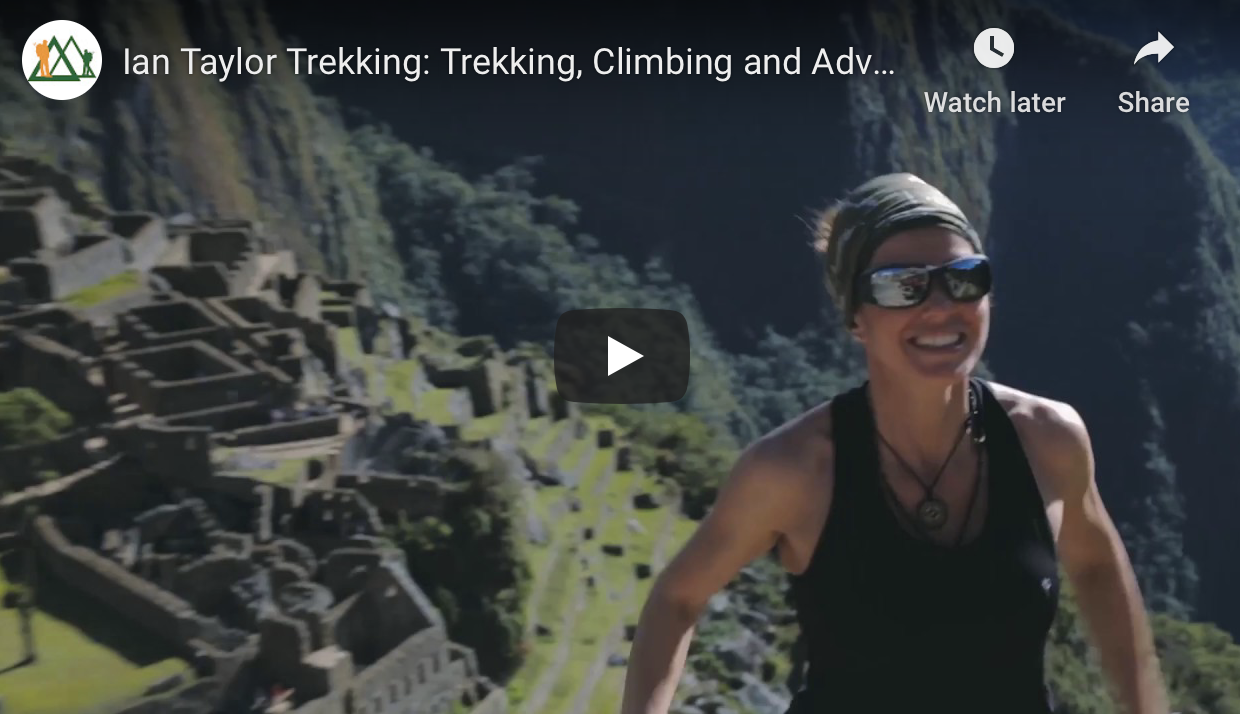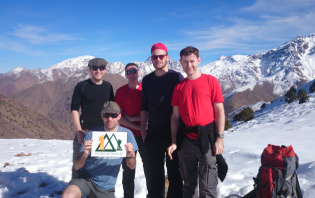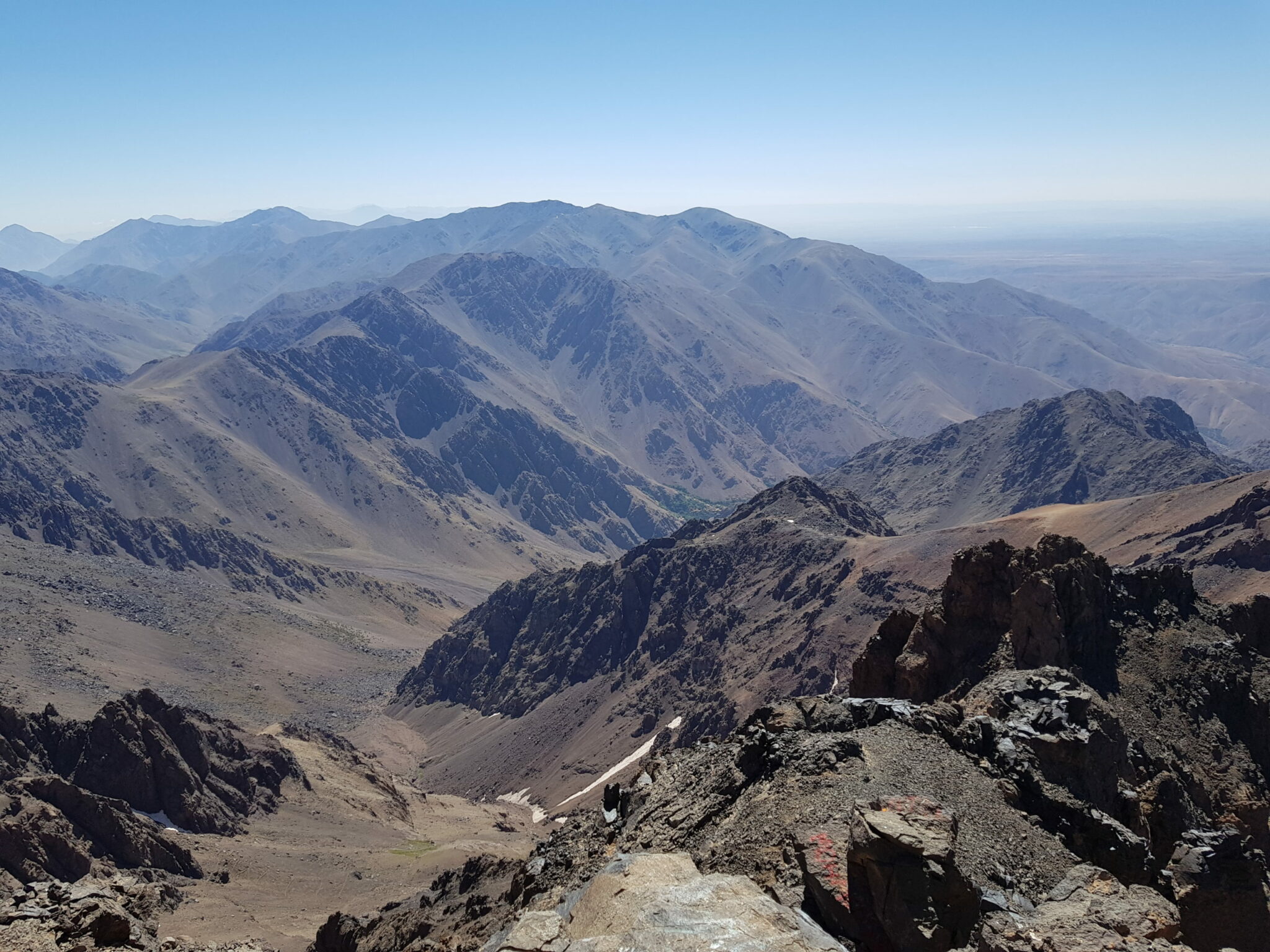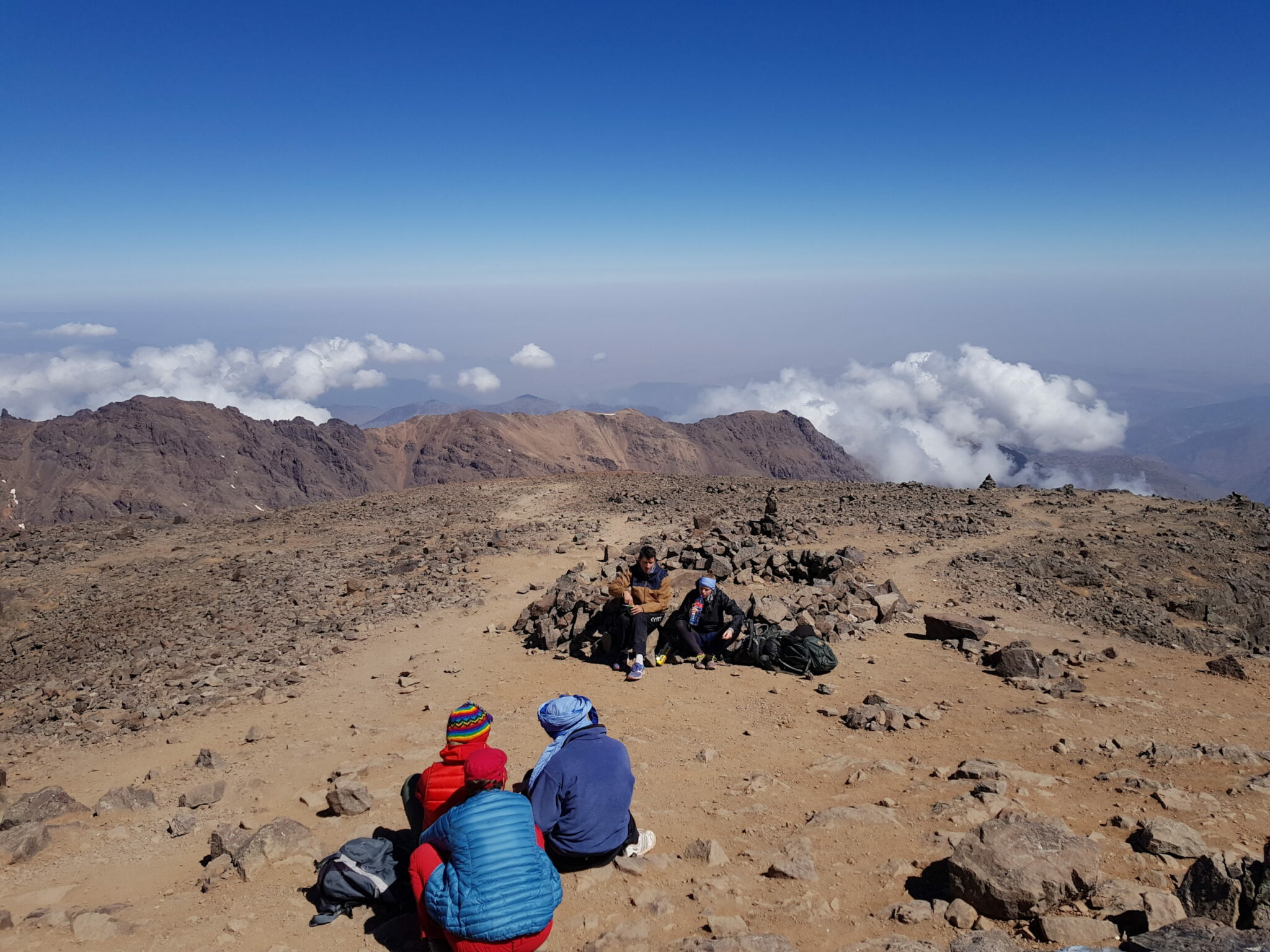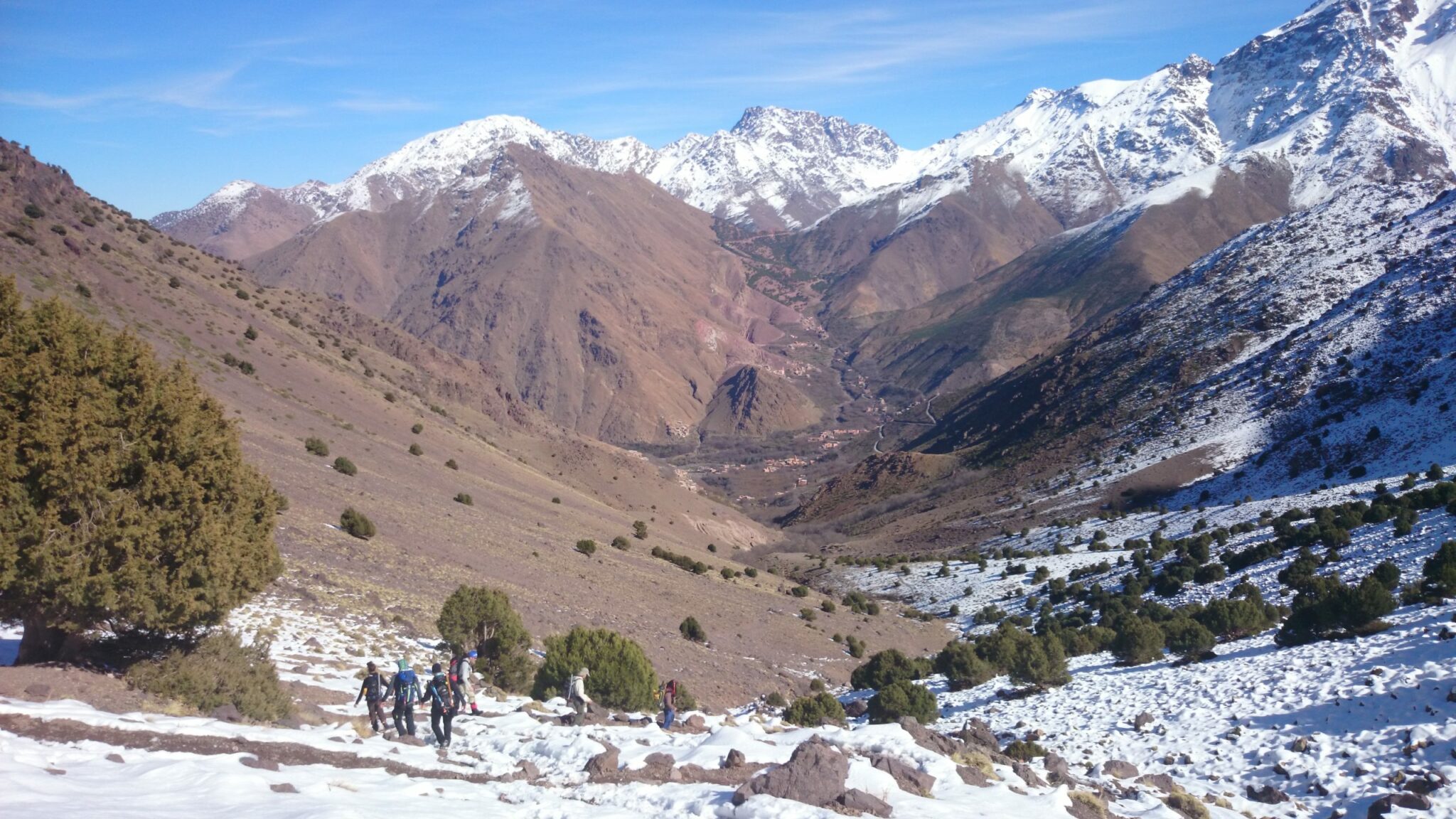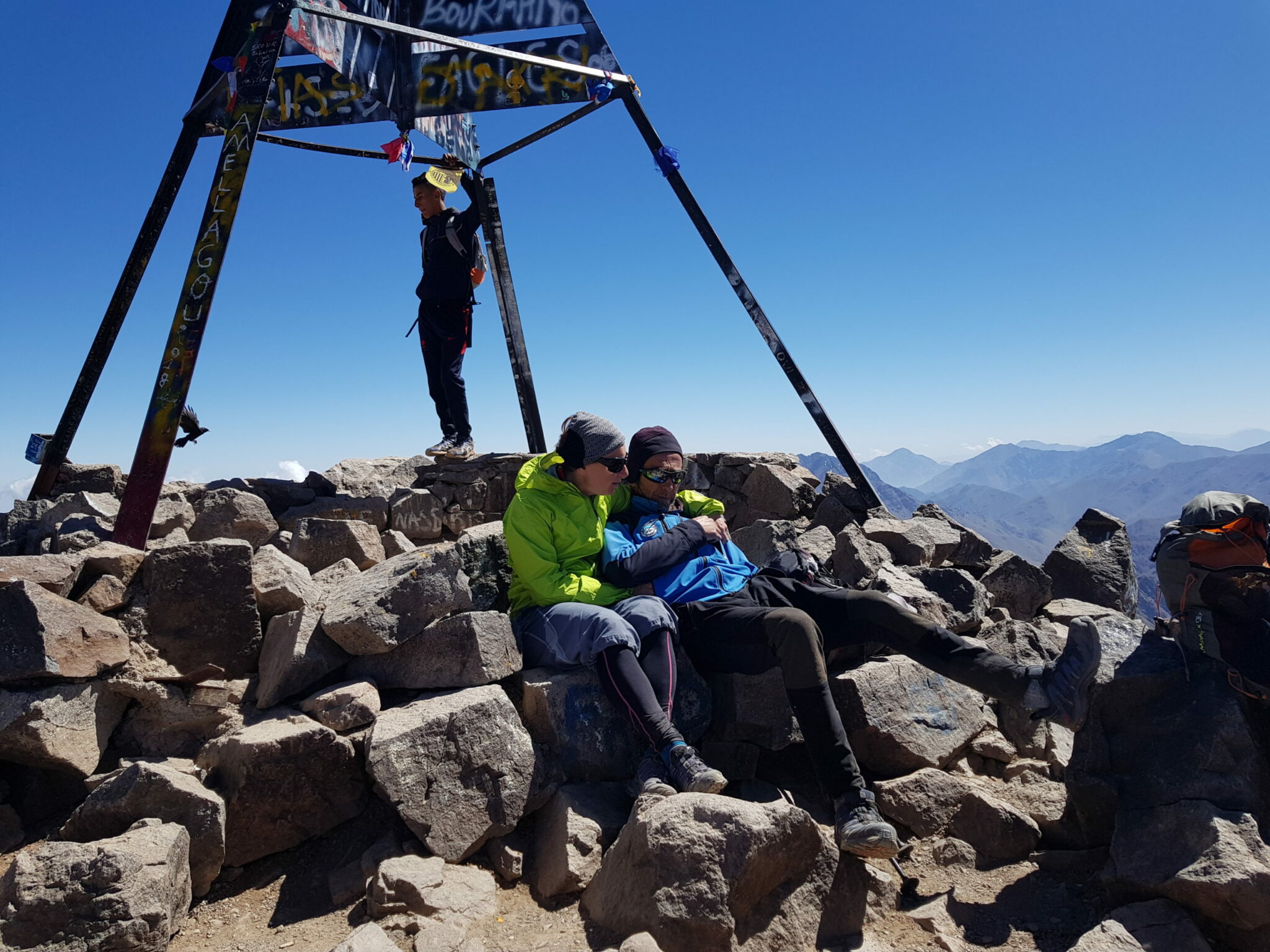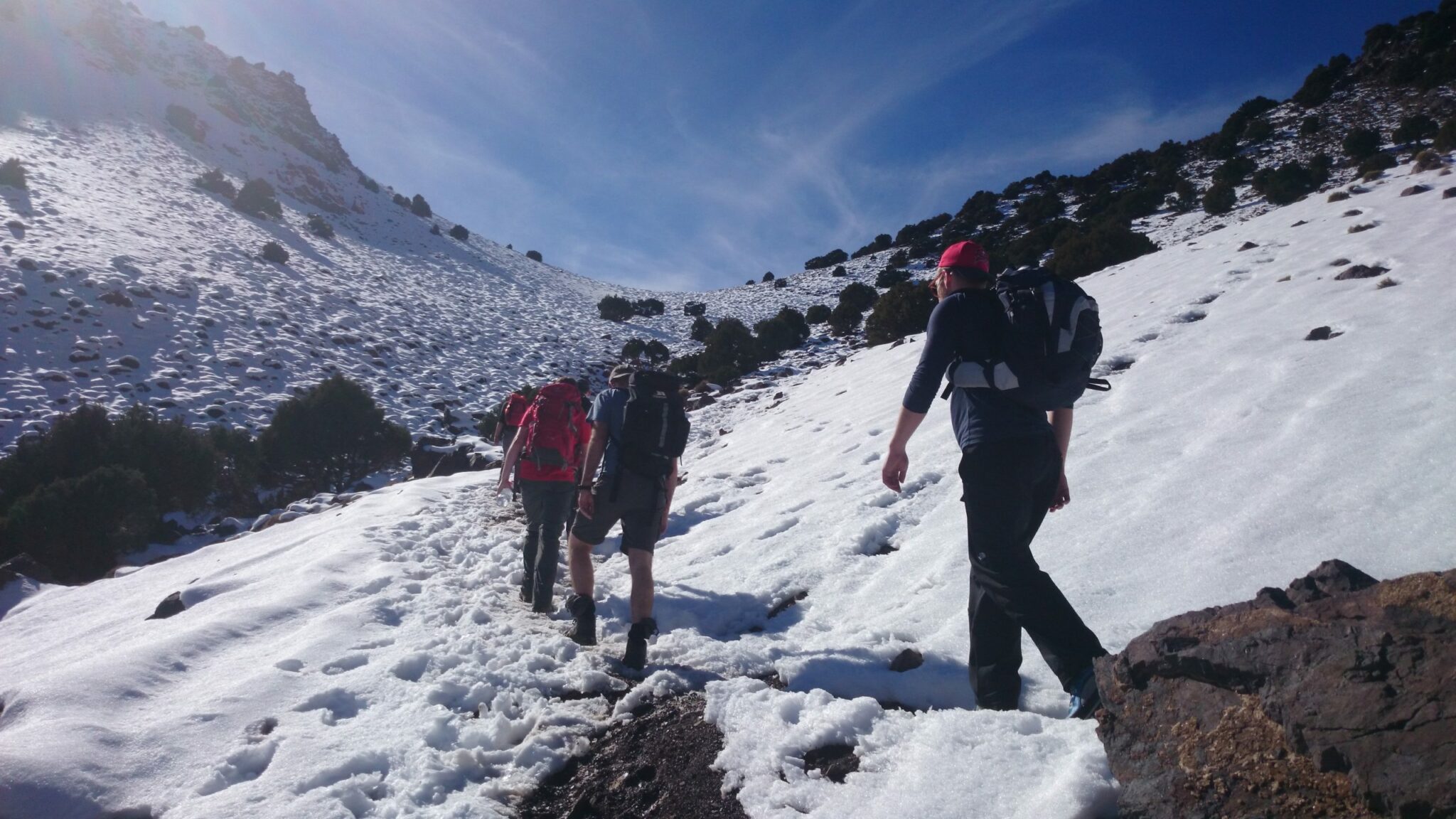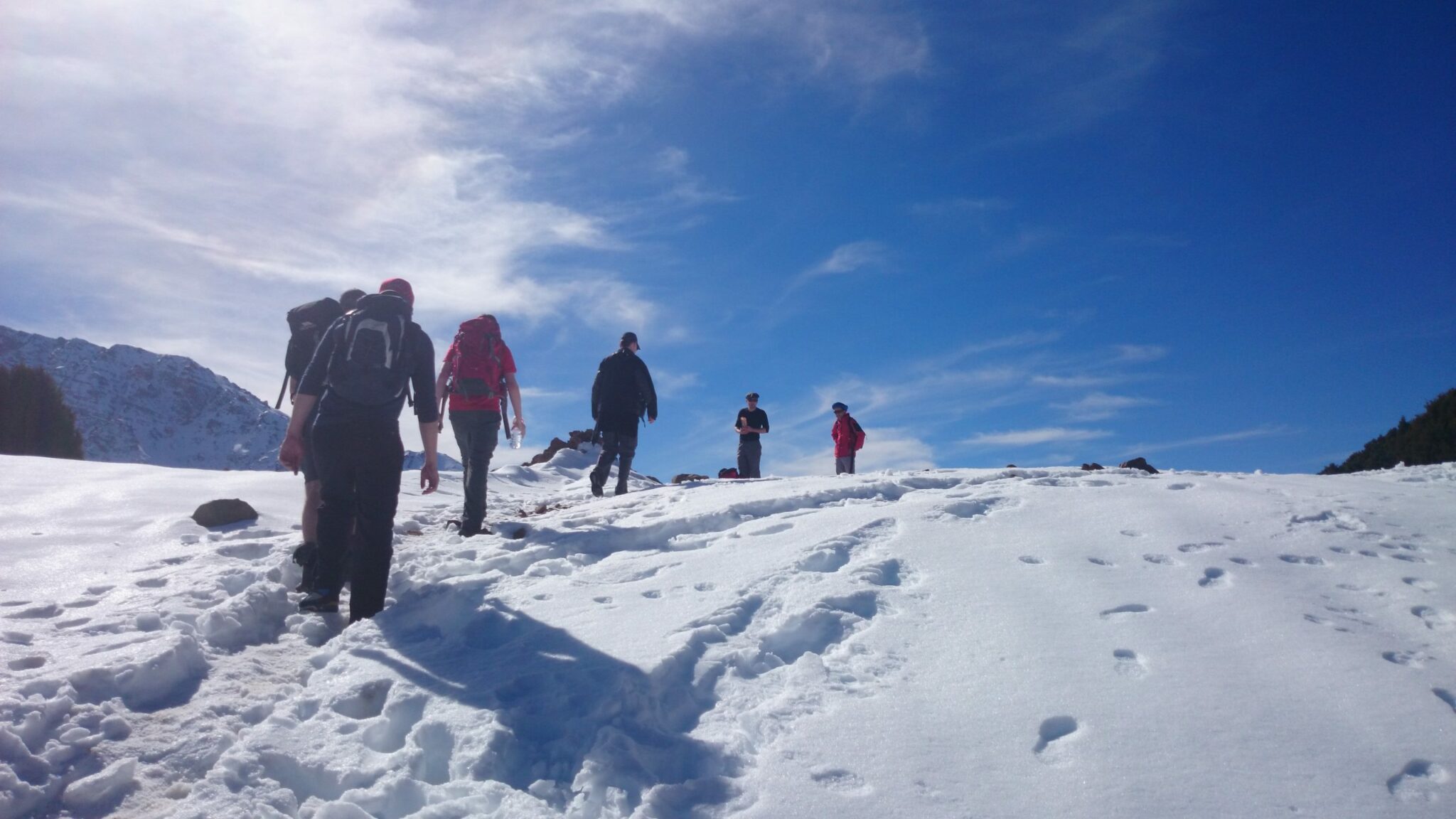Climb Mount Toubkal: An Unforgettable Adventure in Morocco
We have a range of itinerary options for climbing Mt. Toubkal. We also have a range of services from basic for 5 star hotels with more guides and support for your climb. The start of the trek is just a couple of hours drive from Marrakesh in the beautiful town of Imlil. All adventures on Mt. Toubkal start in this unique mountain town. Imlil has a unique mountain vibe and one we are sure you will enjoy. The food, people are warm and welcoming and nice place to relax before and after your trek. Toubkal is a great experience but you should consider additional time n Morocco and time around these mountain villages. You would find time to explore Morocco’s most captivating city, Marrakesh. While in Morocco it is worth spending an extra few days to explore the desert, cities and unique picturesque scenery Morocco has to offer. The cost start from $1,700.
Tips and Advice
1). Timing
Do you want to climb in Winter or summer. You need to decide as they will be two very different experiences and require different gear. In summer there is minimal or no snow so trekking boots would be required. In winter, mountaineering boots, crampons and some technical equipment would be needed.
2). Acclimatization
Check out our itinerary we have added in a spare day for an additional summit attempt. This is important to give you the best chance at success. here is one thing that needs your highest consideration and that is the itinerary and the approach to high altitude. We always have additional acclimatization built into all our itineraries.
3). Training for Toubkal
Toubkal does require a descent level of physical conditioning, more so if you are thinking of climbing in winter. We recommend very specific training and happy to share our advice on how best to prepare.
4). Bringing the Right Clothing
Make sure you have all items on the gear list and know how to use them. Having lightweight clothing and equipment will make a difference in how much weight you are carrying. Also, practice using your gear and equipment and make sure it fits comfortably. Having lightweight equipment and clothing means you will have to carry less weight up and down the mountain.
5). Understanding Altitude Sickness
If you have been on a number of altitude expeditions with us you will know all about altitude related issues and problems. Read and understand the principles of acclimatization and altitude illness. By picking an itinerary with more acclimatization, you give yourself a safer journey into extreme altitude. You also need an itinerary with built in contingency days for bad weather especially if you decide to climb in winter months.
6). Consider Diamox
If you are taking prescription drugs, make sure you bring a sufficient supply to last more than the length of your trip. We highly recommend taking Diamox for the duration of the trip. Our high altitude specialist doctor recommends 125mg in the morning and 125mg in the afternoon. Make sure your Diamox is in tablet form. You will also need to bring a number of antibiotics. There are alternatives to taking Diamox and you most certainly should bring ibuprofen on this trip. Ibuprofen will aid with sleeping at high altitude.
7). Hydration
One of the most important tips we will give you is to make hydration a priority. Hydration at high altitude is extremely important. When you wake up you need to drink 1 liter of water before breakfast. You need to drink 2 liters before lunch and another 1 to 2 liters in the early afternoon. Using a water bladder system is ideal because you can then drip feed water into your body on a regular basis. This will be used on the trek in and lower on the mountain, however during winter it can not be used as it will freeze. Forcing water in, is not a good idea as you will just pee it out. You will need hyper hydration sachets, multi-vitamins and electrolytes while on this Toubkal trip.
Preparation and Training
Train with Weight on your Back
Essentially, you need to be able to walk 10 miles a day in your training on a multi day basis. Also, your training always needs to be done with a weighted backpack as you built up to the trek. On the trail you will need to have a proper backpack with a good waist strap, and you will carry 6kg+/ 12lbs+ in that pack. In your training, you will want to be comfortable with carrying double that amount of weight. We can help you understand this trip so you can come fully prepared.
Strength and Endurance Training is the Most Important
You are entering the realm of high altitude, with 30% less oxygen than you would have at sea level running through your blood stream and muscles. You have to walk for 5 days to reach the summit at 4,167m/ 13,671 feet.
You need your muscles and body to cover distances, at high altitude, then you need to train and condition your muscles prior to arriving in Morocco. You need to be comfortable on steep terrain up and down and have the physical conditioning, or muscle memory, by walking up and down hills, with a weighted pack, prior to your trek.
You Should be Training 4 Days a Week
When I am training for a trek, I will go out once a week, walking 2/3 hours up and down hills, with a weighted pack. I will build the weight in my backpack as I go, from 5kg to 10kg (11lbs to 22lbs) over a period of time usually 2 to 3 months before my treks. In addition to that, I add in 3 or 4 other training sessions per week, depending on time available. These will range from 6k to 10k jogs, weight training, walking up hill with weight on a stair master, biking up-hills for long distances or hiking. All training sessions will be done with a weighted backpack or else focused on strength/endurance building.
The key is getting active and trying to get as much hill work in as possible. I hike at a slow and steady pace, trying to drink a liter of water for each hour of exercise. Let us help you prepare as we know most of you are coming from sea level with limited or no access to hills to train on. If you don’t have hills, then you need to use a stair master for the best results.
Not everyone will have access to hills, but this is the best way to train your body and legs for down hill hiking. Depending on your chosen adventure you do need to assess the level of downhill. We have elevation gains available for all of our key trips. I encourage you to review the daily elevation drops and what type of terrain you will be walking on.
For example, on our Inca trail treks you will be drop 700m/ 2,296 feet to 1,000m/ 3,280 feet on different days all on steep rocky stairs. On Kilimanjaro you will drop 2,800m/ 9,186 feet in one day on scree and rock and this is very challenging on your legs and joints.
You have just walked for days on end you have reached your goal but not you have to retrace your steps, often in a quicker time frame. Hiking downhill will take its toll on your joints. Fore sure, the downhill hike will take more wear and tear on your joints and muscles than the uphill.
You do need to use effective training techniques to minimize the impact on your body. Descending using good technique means that you move faster and feel lighter. Remember, 80% of accidents happen on the way down.
Keeping Knees Healthy
We live in Eagle-vail Colorado with amazing access to altitude and a wide range of mountain terrain to train on. In Colorado we can train all year round on hilly terrain preparing for Kilimanjaro, Himalayan trekking and mountaineering trips. I know most of you are joining our trips from sea level and with minimal access to hill training. I encourage you to get out to Colorado doing some multi-day hiking in preparation for your chosen adventure.
If you do not have access to hills and mountains, you must figure out other ways to prepare your knee joints to handle downhill stress. From a knee perspective, downhill hiking means eccentric loading and typically thousands of repetitions of it. Eccentric loading (the lengthening phase of a contraction) is especially challenging to what is called the patellofemoral joint of the knee. This is where the knee cap, meets the femur. Inadequate strength, poor mechanics and lack of exposure to this type of loading can turn downhill forces into injury producing stress. Prior to your trekking trip you need to start implementing sport specific training into our general preparedness programming.
Hiking Uphill and Downhill
Hiking uphill is all concentric muscle action (muscle active while shortening) at the knee joint without any eccentric loading (loading while muscle is lengthening). Concentric only exercises tend to cause less mechanical stress, load and pain to joints and tendons than do exercises that have eccentric phases. What goes up must come down.
You must prepare our body and specifically your knees to handle downhill hiking. Depending on the trip, you really need 6 months of some sport specific training into our general preparedness programming.
The strength movements below are similar but slightly different in specific ways. We purposely only hit each one once per week because too much volume of these exercises could quickly lead to an over training injury, so be careful. I would recommend adding in additional hip flexor and quadriceps mobility work at the end of your training sessions as well to maintain good length tension relationships and to protect your spine.
The Point of These Exercises
Increase vertical loading volume of the knees with a sight posterior to anterior (back to front) force vector. Get exposed and accustomed to decelerating the vertical and forward forces using primarily a knee strategy. Transition from doing most lunges and squats with a 3 points of contact foot position to a more heel elevated position where we contact and press through the forefoot.
The 3 points of contact foot position is the most stable position for the foot and encourages a balance of hip and thigh musculature – great for general preparedness training. Transitioning to a heels elevated position where the forces are applied through the forefoot places most of the stress on the quadriceps and knees – optimal for downhill hiking training.
Exercises for Downhill Hiking
You should consider adding these movements into your weekly training 2 times per week. Add 3-5 sets of 10-15 repetitions (per leg)
1). Heels Elevated Goblet Squat
2). Forward Alternating Lunge with Farmers Carry Loading
3). Forward Alternating Drop from Box Lunges
4). Banded Posterior to Anterior (PA) Forward Lunges
Carrying Weight
One of the best ways of mitigating the risk of musculoskeletal issues is by carrying a light pack. Then build up the weight you carry over time. An overly heavy backpack is not recommended in the early stages of your training.
Extract its biggest toll on your body during steep and/or long downhill sections, so a hiker should always aim to travel as lightly as the dictates of their skillset and the environment into which they are venturing allow.
If you are carrying weight on longer hike you should slowly build up the weight you carry. You should also consider carry water uphill and dump as much water/ weight as possible for your downhill. Always assess the weight you are carrying for each hike and always build up slowly over time. You do not want to get injured.
Daily Distances
Day 1 Arrive in Marrakech International Airport
Arrive to the Menara Airport of Marrakech. Our guide and driver will meet you for the short transfer to your 4* hotel. After a welcome cup of fresh mint tea and Moroccan pastries, the guide will do a briefing with you to talk through the days to follow as well as to go over some local rules/traditions to follow while you are in Morocco. If time allows, you can explore the old parts of the Medina such as Bahia palace, Majorelle Garden, Koutoubia Mosque and More.
Day 2 Drive from Marrakech to Imlil 1,747m/ 5,731 feet
We will leave the busy city behind us this morning and drive south towards the craggy peaks and plunging valleys of the Toubkal Massif. Crossing the Haouz Plain, we pass through the tiny town of Asni, from where our road begins to climb towards the foothills of the Massif. Below us the valley of the Oued Gheraya stretches out into the distance and small villages cling to the sides of the steep hills as we meander. We should arrive to Imlil by midday, and after lunch you will have time to walk into one of the surrounding passes or Villages as a warmup for the next day. Overnight in a guesthouse/Riad, breakfast, lunch and dinner included. 2 to 3 hours walking today. There is an optional cooking class that you can join in the afternoon with our Berber chef – free of Charge
Day 3 Imlil – The Toubkal Refuge (Base camp)
Today we will start our trek, heading along the Mizane Valley, first towards the village of Aremd and then onto the shrine of Sidi Chamarouch. Built on a moraine spur overlooking the valley floor, Aremd is the largest village in the valley and provides an interesting mix of traditional terraced farming, gites and streets that seem to be permanently gridlocked by goats and cattle. For generations, the local Berber villagers have worked these lands, producing corn, potatoes, and walnuts in the harsh landscape. Continuing east and crossing the flood plain, our route takes us along mule tracks and up into the high rocky cliffs above the valley. Crossing the river, we eventually come to the pastoral shrine of Sidi Chamarouch, which attracts tourists and pilgrims alike (although only Muslims are allowed to cross the stone bridge to visit the shrine itself). The village sits beside a small waterfall, a jumbled cluster of houses that seem to melt together into an anarchic mass. From here the trail continues to climb steadily, snaking and zigzagging its way up to the snowline, and the Toukbal Refuge at 3,200m/ 10,498 feet, our stop for the night. Approx 5hrs hiking and 11km/6.8mi. Breakfast, lunch and dinner are included today.
Day 4 Acclimatization Day
Today is an additional acclimatization day built into the itinerary. We will take the trail, which traverses uphill, to the famous Tizi Ouanoumss Pass at 3,600m/ 11,811 feet. From here, you will be rewarded with stunning views, overlooking the lush Tifnout Valley and Ifni Lake at 2,500m/ 8,202 feet. After enjoying the surroundings, we will return back to Base Camp. The total distance today is 8km/4.9mi. Breakfast, lunch and dinner are included today.
Day 5 Summit Day - Jebel Toubkal 4165m/ 13,665 feet
Early in the morning, we will make our attempt to climb the summit of Jebel Toukbal, the highest peak in Northern Africa. Our route takes us up the south cirque, crossing the stream above the refuge and then heading across one of the mountains numerous scree fields, where we will have to negotiate a seemingly endless carpet of boulders and rocks. The walking is relatively straightforward, but the scree and the altitude will make the going quite difficult in parts, however, the views along the way make the journey more than worthwhile. Cresting the ridgeline, we find ourselves on the plateau, from where it is a short walk to the summit and the vistas out across the surrounding landscape are breathtaking. From here there are unrestricted views in every direction, from the Marrakesh Plain to the High Atlas in the north and as far south as the Anti-Atlas and the Sahara. After taking our time enjoying the views and our accomplishment, we will descend back to the Refuge and stay overnight. Today will be a challenging day with 8k/4.9mi of steep and challenging terrain. Breakfast, lunch and dinner are included today.
Day 6 Toubkal Basecamp – Imlil –Marrakech
After Breakfast at the Basecamp, a pleasant descent takes us from an arid mountain landscape to the irrigated valleys below. We will follow the trail through Sidi Chamharouch (marabout) to the beautiful, cultivated area of Aremd 1,900m/ 6,233 feet before we reach Imlil. This will be another 11km/6.8mi day for our final hike! From here, we will be picked up in private transport for the one-and-a-half-hour drive back to Marrakech and our hotel for the night. We will have a team dinner tonight in the city to celebrate our success! Breakfast, lunch and dinner are included today.
Day 7 Fly Home
Today is the final day of the itinerary and we will pick you up at the hotel and transfer you back to the airport for your onward journey! Breakfast included today.
Ready to go?
Are you ready to climb Mount Toubkal. Our itinerary will give you the best chance of success. Our Toubkal climbing team, pride ourselves in making sure that you have every opportunity to succeed on the mountains, including professional training advice, gear lists and much more.
We are always available 5 days a week to answer any questions you may have by email or phone, so contact us today!



